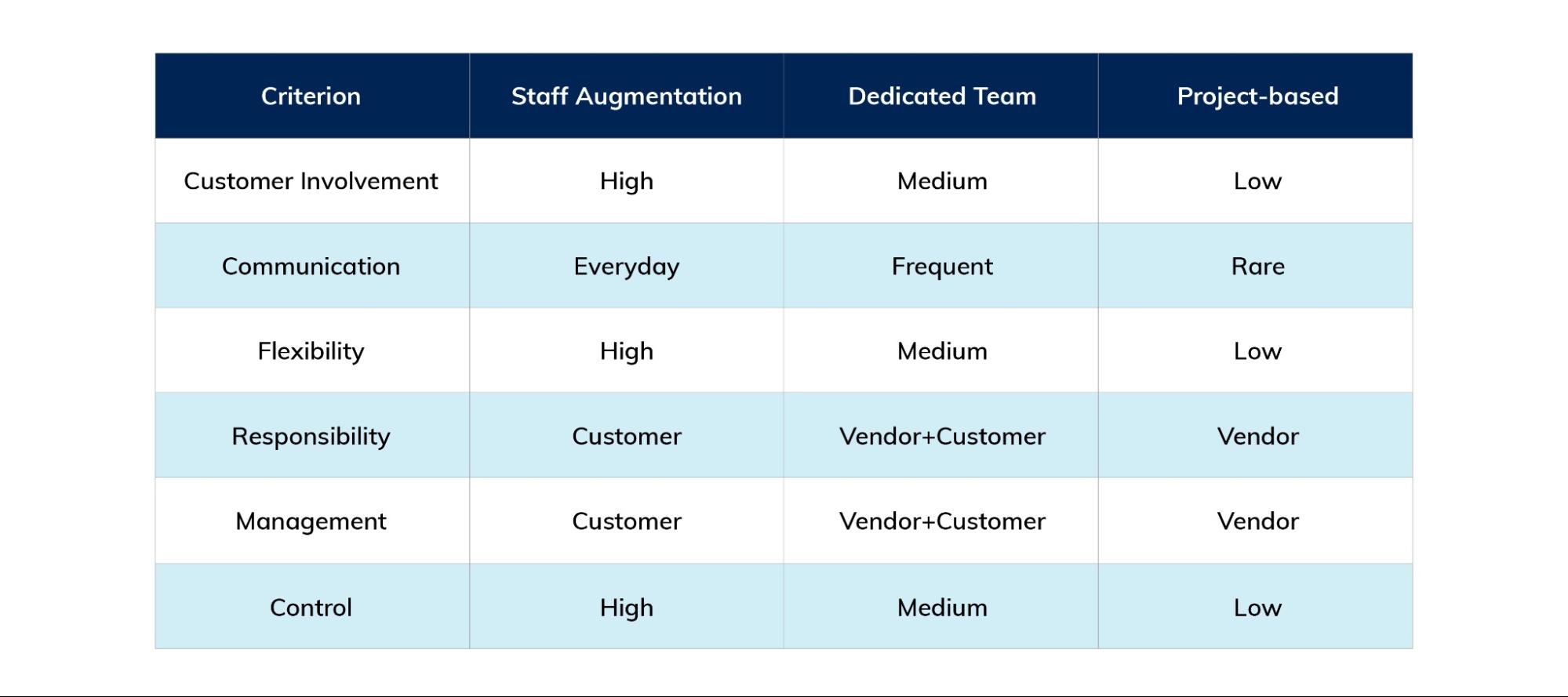When to Consider
Nearshore development is a good option for both short-term and long-term projects when the customer wants to have more control over project delivery and teamwork.
Offshore Development
How it Works
The offshore outsourcing model means hiring a vendor from a distant country, in most cases, in a different part of the world.
Pros
# Access to a Large Talent Pool
ICIMS report states that in the last three years, the US employers managed to hire only 60% of the tech talent required though the number of applicants was twice higher than the number of open positions. The reason lies in the lack of qualified candidates. When you offshore software development, you can choose from the best tech expertise in any part of the world.
# Cost-efficiency
One of the most common reasons why companies decide to choose an offshore software development company is cost-saving. Outsourcing to a nearshore vendor slightly differs in price from outsourcing onshore while offshoring allows you to save sometimes even twice more than you would pay in your country or nearshore.
# Unique Expertise
Within a short period of time (in our inVerita, up to 30 days), you can fulfill the needs of your project in various tech stack and domains. In Eastern Europe, for example, companies invest in STEM and CS education of software developers on a regular basis so you can be sure to hire the uppermost talent at a considerable cost.
Cons
# Different Time Zones
Some people find it difficult to adjust to working in different time zones, waiting for replies, or fear a lack of control over the project scope. Though, from our experience, setting clear requirements and setting a stable and convenient for both meeting schedules will make the communication process smooth and simple.
# Risk of Cultural Incompatibility
Unfortunately, business owners frequently ignore the risk of cultural incompatibility while choosing an outsourcing partner. However, it’s one of the most common reasons why cooperation fails. A common example is the Indian “yes” syndrome. In Indian culture, people try to avoid giving negative answers, so if you receive a positive answer for your question, most probably it means “I’ll do my best”.
When to Consider
Complex, long-term projects when the in-house development team is absent or small.
Relationship-Based Types of IT Outsourcing Models
Based on the type of cooperation with a vendor, there are three IT outsourcing models.
Staff Augmentation Model
How it Works
The IT vendor provides you with a number of remote professionals whom you manage on your own.
Pros
- The model is suitable for short-term and long-term projects.
- You have full control over your teams.
- It’s easy to scale up and scale down to adapt to the evolving business needs.
Cons
- Responsibility for project success lies exclusively on you.
- Possibility of communication gaps.
- The customer takes care of onboarding and managing an outsourced team.
When to Consider
Staff augmentation is a good option if you don’t have enough expertise in a particular technology or domain or you need to speed up the development process.
Managed/Dedicated Team Model
How it Works
A vendor provides you with a team that works exclusively on your project. This team may include not only software developers but also designers, QA engineers, business analysts, and a project manager, depending on your needs and budget. The outsourcing company is interested in compiling a team that works well together and feels for a customer like an in-house team.
The budget of the project depends on the number and expertise of people involved.
Pros
- The customer has complete control over the project delivery and work process, and the ability to choose team members or apply any staff changes.
- The ability to increase or decrease your project, and adjust the conditions through an agile approach.
- A team has a full understanding of your project, industry, and business domain, as it works exclusively on your project.
- Full control over the budget.
Cons
- You need to wait for your team to be allocated (time depends on the company).
- It’s not sustainable for very short projects.
When to Consider
A dedicated team outsourcing model is the best option for long-term projects with a specific product niche when the customer aims at delegating management processes though still remaining engaged in decision-making and controlling the pace of development.
Project-Based Model
How it Works
The outsourcing company takes full responsibility for the entire process of software development from planning to release.
The customer pays a fixed price agreed beforehand or pays for the number of hours needed to complete the scope.
The vendor is obliged to deliver the product according to the specifications and deadlines agreed upon beforehand while all management tasks are held by a PM assigned by the outsourcing company.
Pros
- Definite timelines and deliverables.
- The ability to focus exclusively on your core business.
- The responsibility for the execution and delivery of the final product is on your vendor.
Cons
- Limited control over the project and development team.
- A customer must define the full specifications of the project at the beginning.
When to Consider
The project-based model works well for startups, and enterprises with small or no internal development teams.









_1764586939-small.webp)
